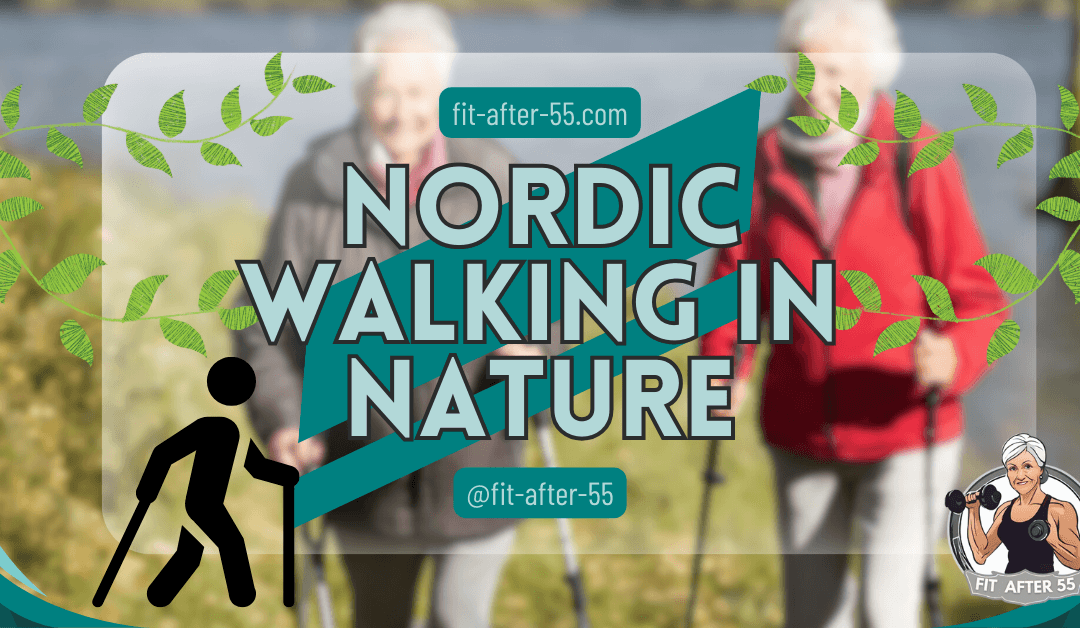Nordic Walking in Nature fosters a vital connection with our surroundings, reminding us of the importance of tranquility amidst the hustle and bustle of modern life. It offers a gateway to this rejuvenating experience, accessible to people of all ages.
As individuals aged 55 and above embark on a day off in the mountains, they embrace the transformative power of Nordic walking, discovering how this activity not only invigorates the body but also nurtures the soul. From the serene embrace of forests to the lively energy of urban parks, Nordic walking allows individuals to immerse themselves in the natural world while engaging over 90% of their body’s muscles.
Rooted in the summer training of cross-country skiers, this rhythmic movement with specialized poles enhances physical fitness and promotes mental clarity and inner harmony. Join us as we delve into the essence of Nordic walking, exploring its benefits, techniques, and the boundless opportunities it offers for outdoor exploration and well-being throughout the seasons.

Nordic Walking in Nature: Enhancing Outdoor Connection and Wellbeing
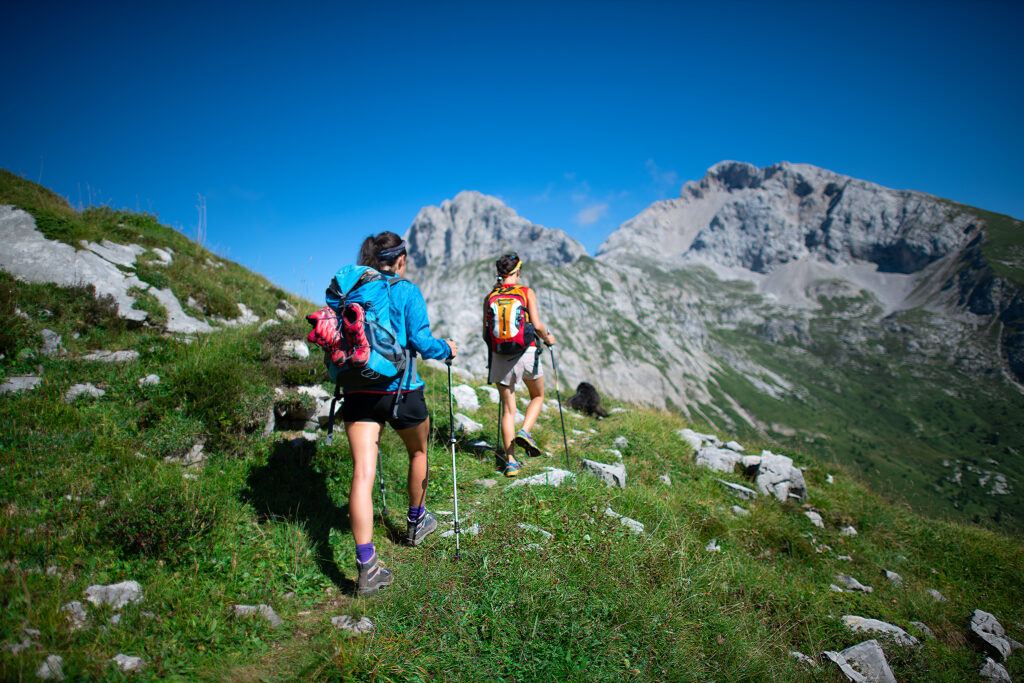
Nordic walking, the simple yet profound act of walking with poles, transforms a casual stroll into a full-body exercise and a deeper connection with nature.
As you stride through forests, meadows, or even urban parks, this activity enables you to experience the invigorating freshness of nature while engaging over 90% of your body’s muscles.
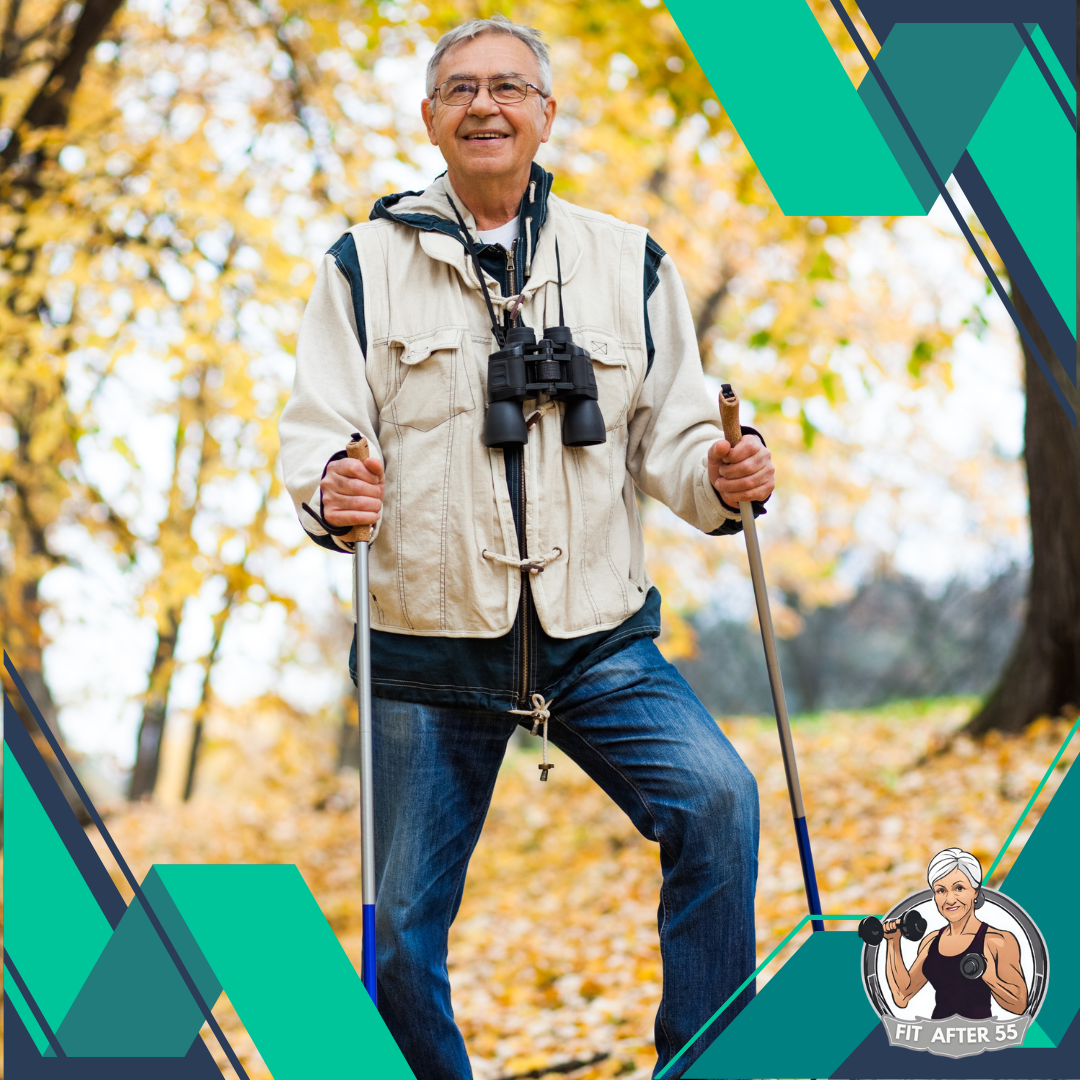
The rhythmic movement with the aid of poles, originally derived from cross-country skiers’ summer training, benefits not only your physical health but also your mental well-being.
Whether you’re winding along a tranquil riverside or trekking up a gentle slope, the essence of Nordic walking lies in harmonizing with the natural world.
By incorporating techniques that improve your posture, balance, and stamina, these outings can serve as a meditative escape from daily stresses.
Additionally, as Nordic walking can be undertaken in various terrains and adapted to any season, it offers a unique, year-round opportunity to explore the outdoors, meet like-minded individuals, and enjoy the myriad health benefits associated with this versatile exercise form.
Key Takeaways
- Nordic walking enhances both physical fitness and mental health by involving the whole body and promoting outdoor connections.
- Proper technique is essential for maximizing the benefits and ensuring a safe, effective workout.
- This activity is adaptable to different environments and seasons, encouraging consistent engagement and exploration.
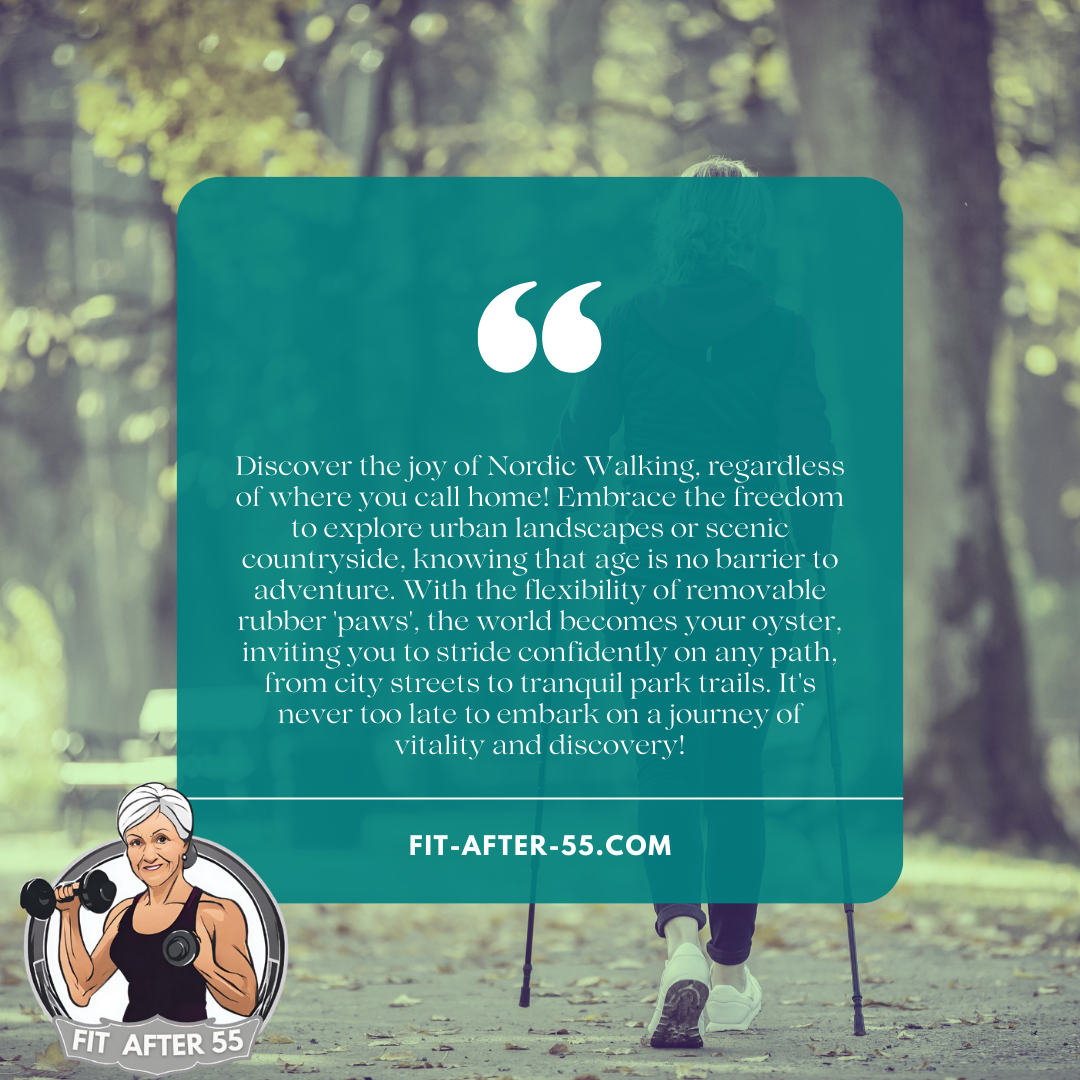
The Fundamentals of Nordic Walking
Nordic Walking transforms routine walking into an impactful full-body workout. You’ll engage more muscles and increase calorie burn by incorporating specialized poles.
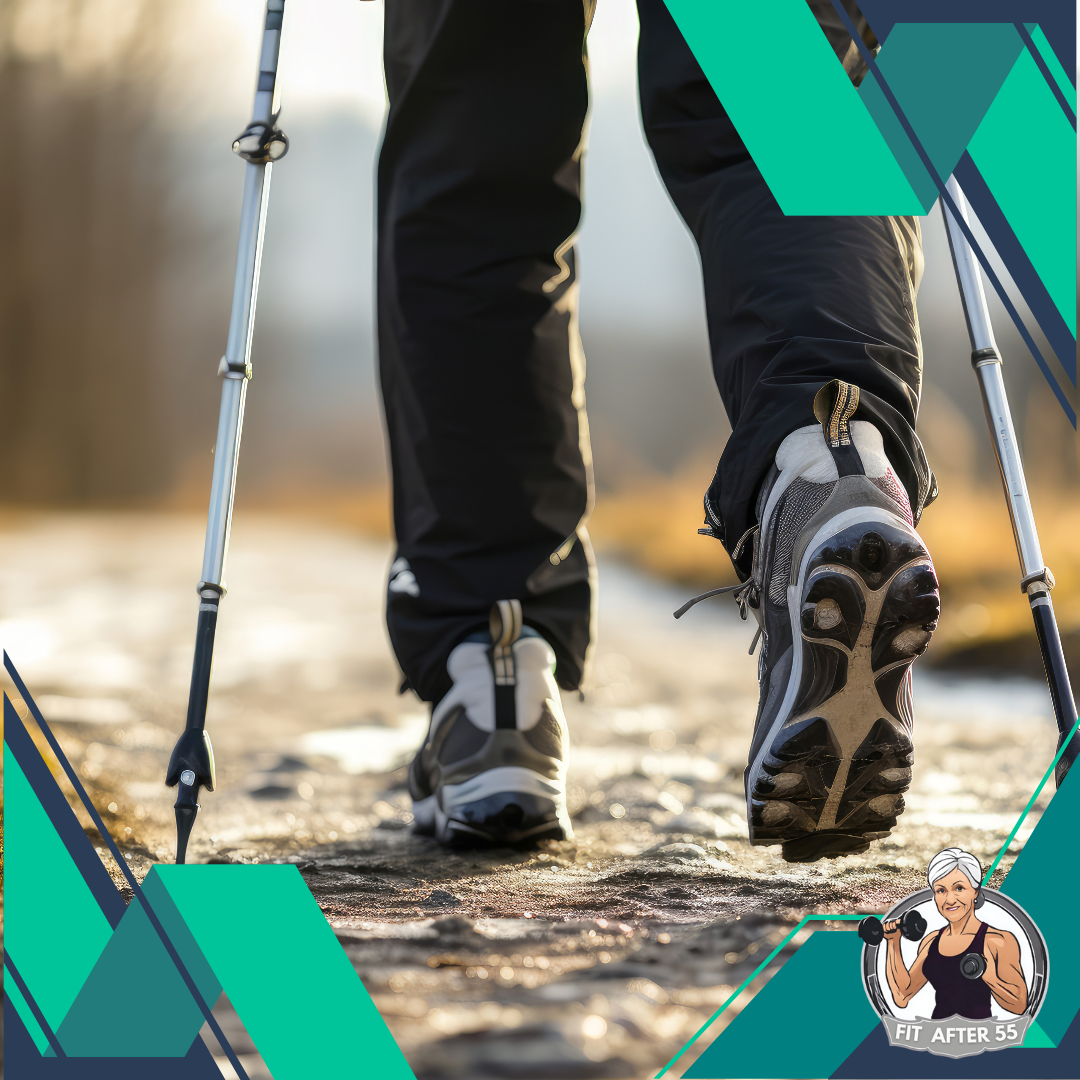
Defining Nordic Walking
Nordic Walking is a form of outdoor exercise that equips you with specially designed walking poles. This method works both your upper and lower body muscles, significantly more than regular walking.
Origin and History
The technique was developed in Finland as a summer training exercise for cross-country skiers. It gained popularity by combining cardiovascular exercise with a total body workout, offering a unique balance of efficiency and accessibility in outdoor fitness.
Equipment Essentials
To start Nordic Walking, you need:
- A pair of Nordic Walking poles: Essential for balance and to propel yourself forward.
- Proper footwear: Shoes that provide good support and a comfortable fit.
- Appropriate clothing: Wear layers to adapt to changing weather conditions easily.
Ensure your poles are the correct length for your height to guarantee the most effective and comfortable workout.
Techniques and Training
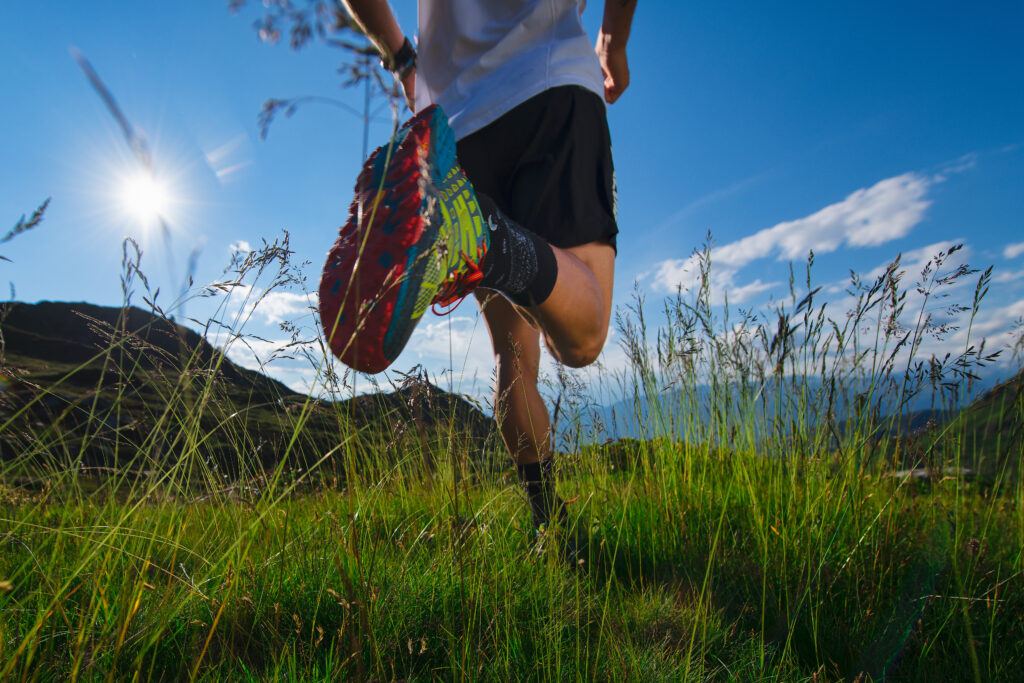
Mastering Nordic Walking requires understanding the right techniques and following structured training programs. Below you’ll find detailed methods and exercises designed to optimize your walking experience.
Basic Techniques
- Footwork: Start by walking naturally and roll your foot from heel to toe through each step.
- Pole Usage: Grip the poles lightly and plant them at an angle behind you, coordinating them with the opposite foot’s stride.
Advanced Techniques
- Pole Angling: For more power, practice angling your poles more acutely toward the ground as you stride.
- Stride Length: Increase your stride length progressively as you become more comfortable, ensuring you maintain proper form.
Training Programs for Beginners
- Frequency: Aim for three Nordic walking sessions per week.
- Duration: Begin with 15-minute walks, gradually increasing to 1 hour as your endurance improves.
Warm-Up and Cool-Down Exercises
- Warm-Up: Start each session with 5-10 minutes of dynamic stretching, focusing on the legs and arms.
- Cool-Down: End your walk with 5 minutes of slower walking and static stretches to relax your muscles.
Benefits of Nordic Walking
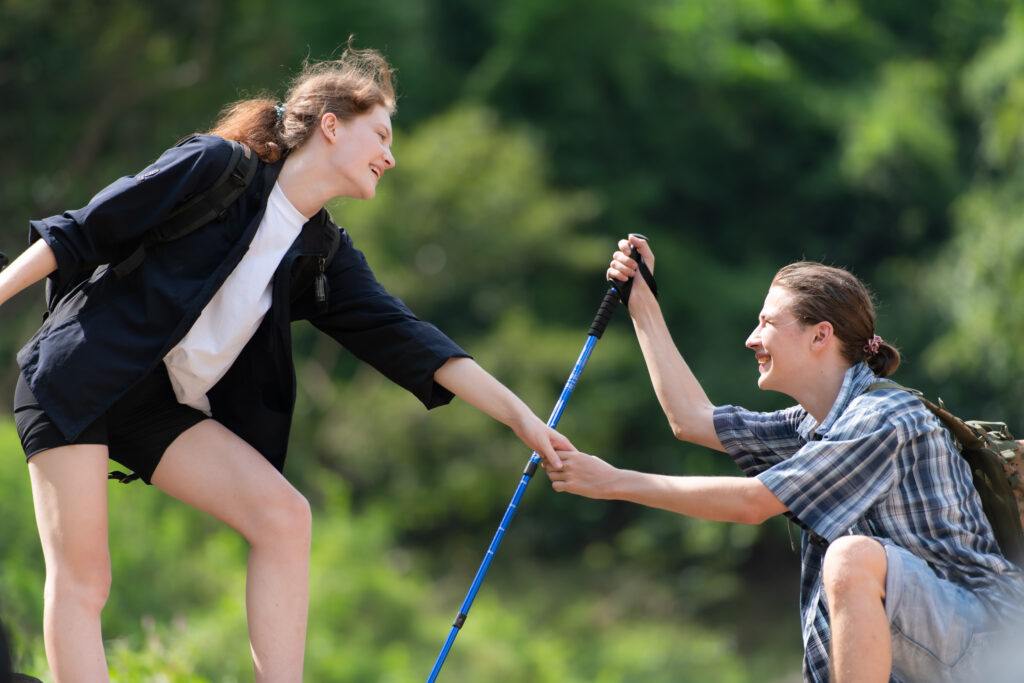
Nordic walking enriches your regular walking routine with enhanced physical and mental health benefits, all while providing an opportunity for social engagement.
Physical Health Advantages
- Full-Body Workout: Not just legs, your arms, shoulders, and torso also engage actively, leading to an improved full-body workout compared to regular walking.
- Low Impact Yet Effective: Suitable for all ages, Nordic walking is gentle on the joints but still serves as a robust form of exercise.
Mental Health and Well-being
- Stress Reduction: Walking in nature can decrease stress levels, and the rhythmic nature of Nordic walking may enhance this calming effect.
- Improved Cognitive Function: Engaging in an outdoor activity like Nordic walking can increase your mental clarity and focus.
Social Benefits
- Community and Connection: Partaking in Nordic walking groups fosters a sense of community, offering you the chance to make new friends.
- Motivation Through Group Dynamics: Exercising with others can boost your motivation and accountability, enhancing the consistency of your walking routine.
Nordic Walking Across Different Terrains
Nordic walking can be a versatile workout, suitable for a variety of landscapes. Understanding the nuances of different terrains can enhance your experience and benefit your fitness routine.
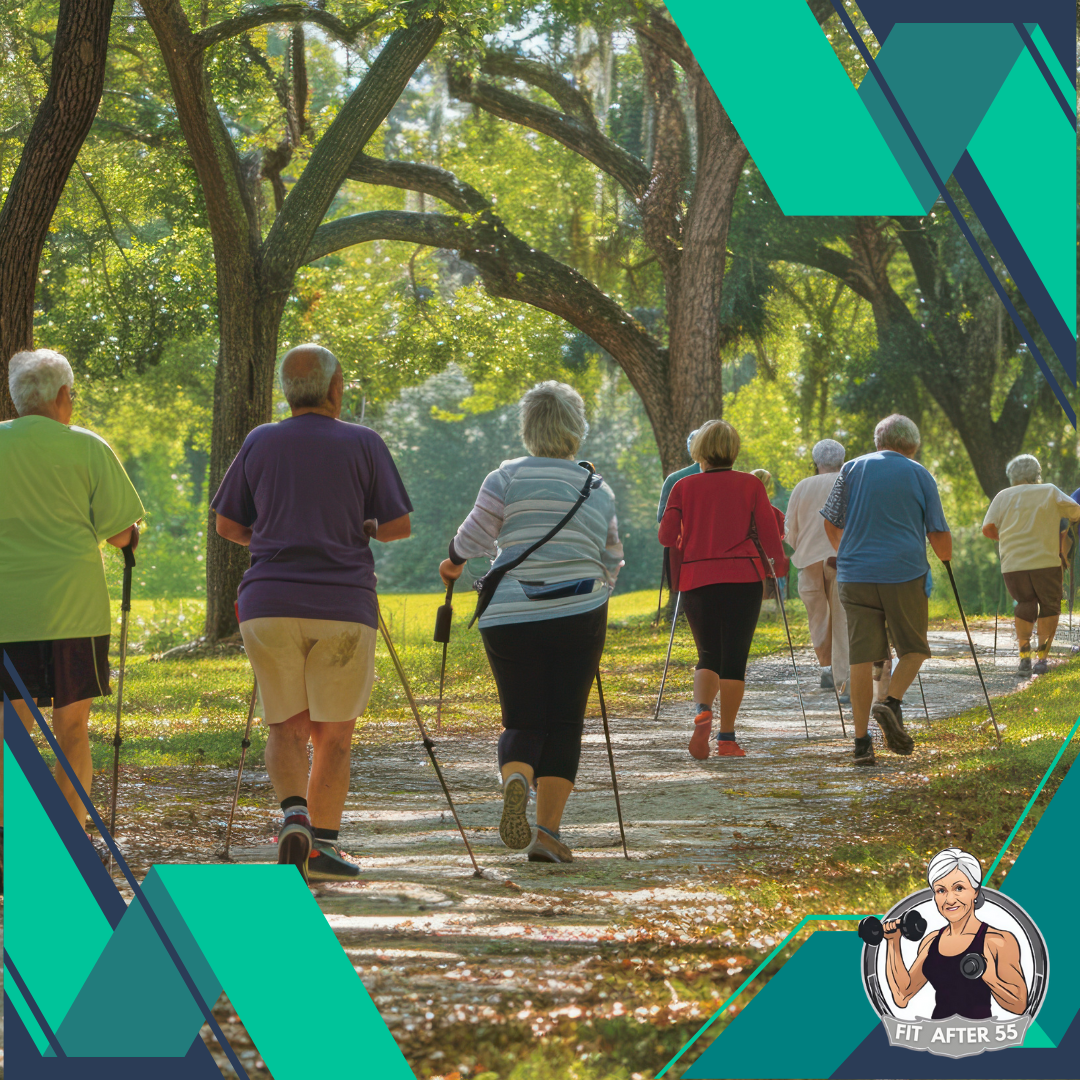
Urban Settings
In urban environments, you utilize paved paths and sidewalks for Nordic walking. The firm ground requires minimal effort in pole placement but demands attention to avoid obstacles like pedestrians and street furniture.
Remember to adjust your stride to the space available, and benefit from the convenience of walking with poles in the heart of the city.
Forests and Nature Trails
Trekking through forests on nature trails provides a serene atmosphere and a multi-sensory experience. The uneven terrain and natural obstacles, such as roots and rocks, challenge your balance and stability.
It’s essential to use poles to help navigate these paths; they aid in maintaining a steady pace while working your body’s muscles thoroughly.
Beach and Coastal Paths
Beach and coastal paths offer a unique challenge because of the sandy or pebbled surfaces, which increase resistance.
Doing Nordic walking on these surfaces helps you engage your lower body muscles more intensively. Make sure to shorten your poles on softer ground to maintain the correct posture and to maximize the upper body workout benefits.
Seasonal Considerations
When engaging in Nordic walking, understanding the unique challenges and advantages of each season will help you fully enjoy and benefit from your outdoor experience.
Summer Trekking
During summer, your trails are generally clear and the days are longer, giving you more time to explore. However, the heat and sun can be intense.
Wear lightweight, breathable clothing, and consider early morning or late evening walks to avoid the peak heat. Stay hydrated by carrying water.
Winter Challenges
In contrast, winter presents the cold and potential snow-covered paths, adding difficulty to your routine.
Traction is key, so equip your Nordic walking poles with snow baskets and wear insulated, waterproof footwear. Remember to check the tips for winter walking from those experienced in Nordic countries.
Adapting to Weather Changes
As weather conditions change, so should your Nordic walking gear and approach:
- Spring: Prepare for rain and mud by wearing water-resistant clothing and footwear.
- Fall: Layer clothing to adapt to variable temperatures, and be mindful of reduced daylight hours.
- Variable Weather: Always carry a light, waterproof jacket and consider UV-protective clothing.
Safety Measures and Environmental Responsibility
When exploring nature through Nordic walking, prioritize your safety and the integrity of the environment. Respect for these elements ensures a positive experience for you and conservation of nature for future visitors.
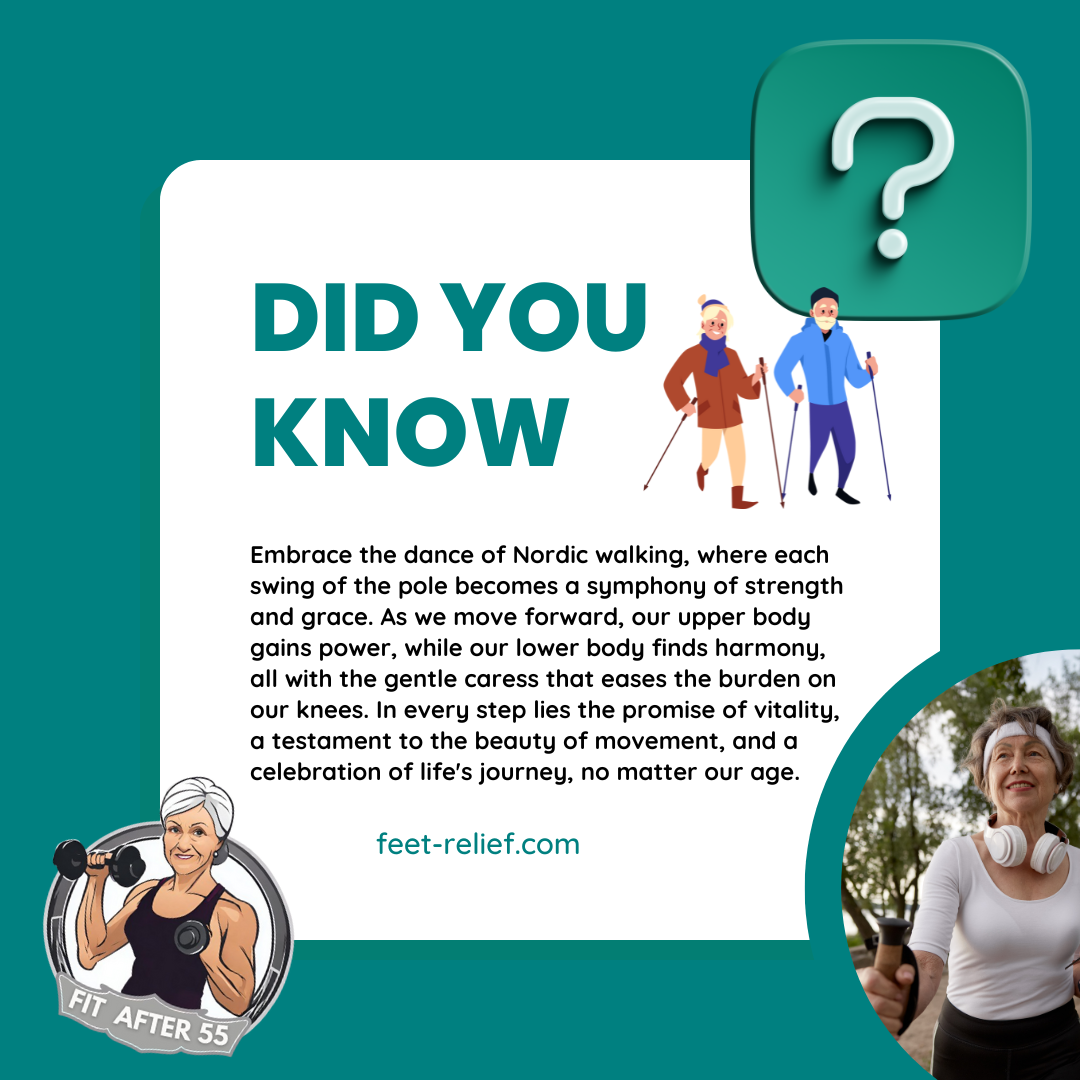
Staying Safe While Walking
- Plan Ahead: Check weather forecasts and trail conditions. Carry a map and compass or a GPS device.
- Dress Appropriately: Wear moisture-wicking layers, sturdy footwear, and a hat for sun protection.
- Stay Hydrated: Bring sufficient water and a water purification method.
- Be Prepared: Carry a first-aid kit and know basic first-aid procedures.
Leave No Trace Principles
- Plan and Prepare: Organize your activities to minimize impact.
- Dispose of Waste Properly: Pack out all trash and waste.
- Leave What You Find: Preserve the present state of nature by not taking souvenirs or altering landscapes.
Respecting Wildlife and Natural Habitats
- Observe from a Distance: Use binoculars to view wildlife without disturbing them.
- Respect Wildlife: Do not feed animals or interfere with their natural behaviors.
- Stay on Trails: Protect plant life and avoid soil erosion by keeping to designated paths.
Community and Events
Nordic Walking provides a unique opportunity for you to engage with nature while also fostering strong community bonds. Discover local groups, participate in events, and contribute to the Nordic Walking culture.
Local Nordic Walking Groups
Local groups often serve as the entry point for individuals interested in Nordic Walking.
By joining a group, you can learn the basics, improve your technique, and enjoy walking in a variety of natural settings.
These groups cater to all levels of experience, from beginners to advanced walkers.
Many local sports clubs and community centers offer regular Nordic Walking sessions, allowing for consistent practice and interaction with fellow enthusiasts.
National and International Events
Competitive and non-competitive events can take your Nordic Walking experience to the next level.
Many countries host Nordic Walking competitions, which can range from fun local races to more challenging national championships.
Additionally, there are larger international gatherings, such as the events facilitated by the Norwegian Trekking Association. Here, participants from different backgrounds come together to celebrate their love for the outdoors and Nordic Walking.
Building a Nordic Walking Community
Creating a robust Nordic Walking community involves more than just regular meetups.
It’s about sharing experiences, providing support, and encouraging a healthy lifestyle.
As a member of this community, you can participate in organizing group outings, skills workshops, and social events.
By fostering an environment that values health, fitness, and a connection to nature, you help strengthen the sense of belonging among practitioners and contribute to the growth of Nordic Walking as a cherished practice.
Travel Destinations for Nordic Walking
If you’re looking to immerse yourself in nature and improve your fitness, Nordic Walking could be the perfect activity.
Here are some top destinations where you can enjoy this invigorating exercise:
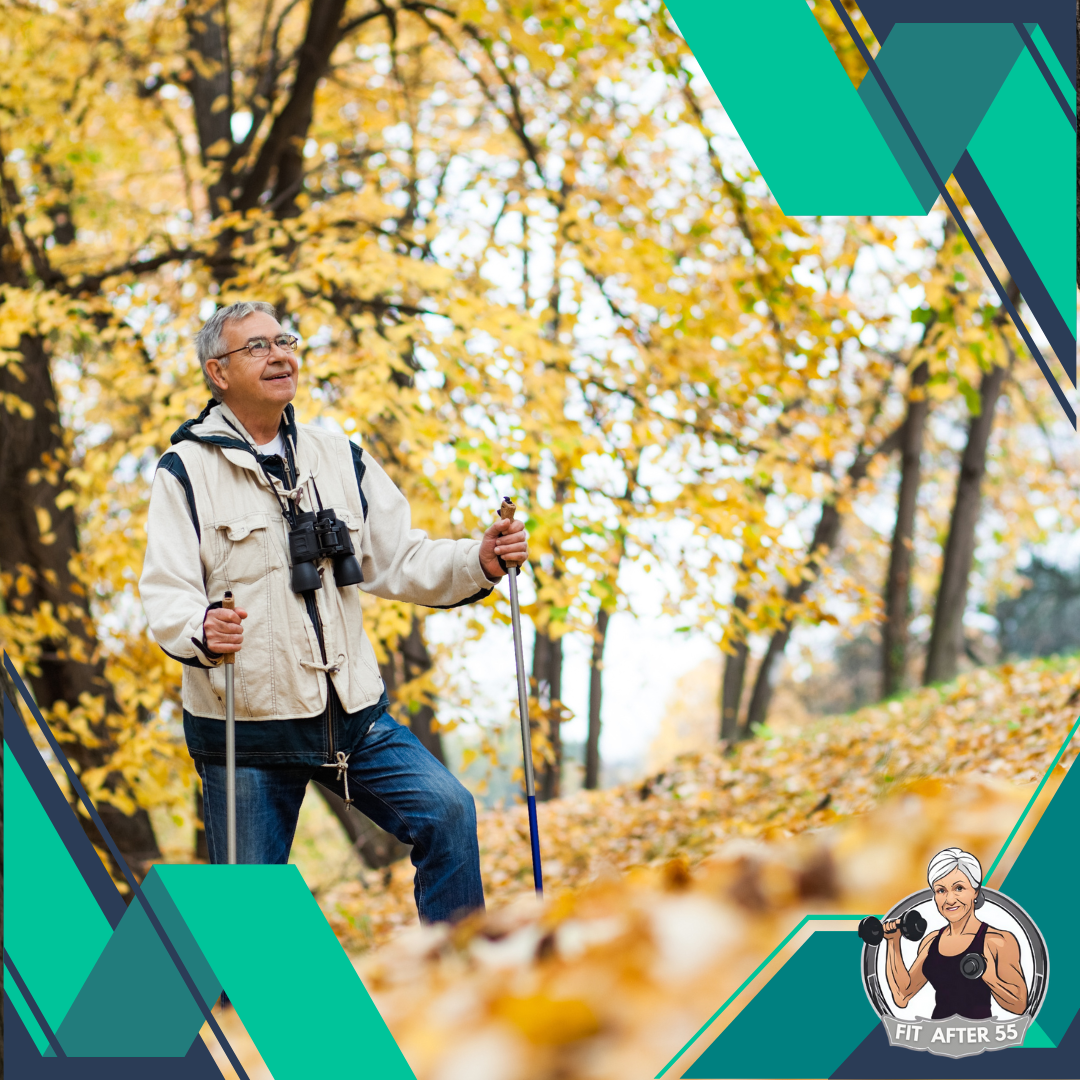
Queenstown, New Zealand
Known for its stunning scenery, Queenstown is an idyllic spot for Nordic walking.
With trails winding by lakes and through mountains, your walks here are nothing short of breathtaking.
Nordic Countries
Iceland, Norway, Denmark, Sweden, and Finland offer an array of natural landscapes perfect for Nordic walking.
From volcanic terrain in Iceland to the forests of Sweden, these countries provide diverse trails for all experience levels.
Scandinavia
If you’re interested in hiking and trekking, Scandinavia’s tours often incorporate Nordic walking.
Plan a trip to explore the region’s vast wilderness and charming Nordic cultures.
Equipment Maintenance and Storage
Proper maintenance of your Nordic walking poles ensures their longevity and your safety.
After each use, clean the poles with a damp cloth to remove any dirt or debris. If they have telescopic sections, separate them and wipe them down to prevent grit from impairing the locking mechanism.
Pole Tips
Regularly inspect the tips for wear. If they show signs of significant wear, replace them to maintain proper grip and protect against slipping during your walks.
Straps and Grips
- Clean the straps with soapy water if they become soiled.
- Check the grips for any damage. If they’re worn out, consider replacing them to ensure a comfortable and secure hold.
Storage Guidelines
When not in use, store your Nordic walking poles in a cool, dry place out of direct sunlight.
Avoid locations with high humidity to prevent corrosion of metal parts.
Telescopic Poles
Store telescopic poles in an unextended position to relieve tension on the locking mechanisms.
Fixed-Length Poles
Hang fixed-length poles from a rack or hook to keep them straight and avoid warping.
Use a storage bag to protect your poles from dust and to keep all related equipment together for your next walk.
Embrace the Journey of Nordic Walking, Regardless of Age
Nordic walking isn’t just an exercise; it’s a journey towards holistic well-being and a deeper connection with nature, suitable for people of all ages. From young enthusiasts to seasoned adventurers, and especially for elderly individuals aged 55 and above, Nordic walking offers a pathway to a healthier, more vibrant life.
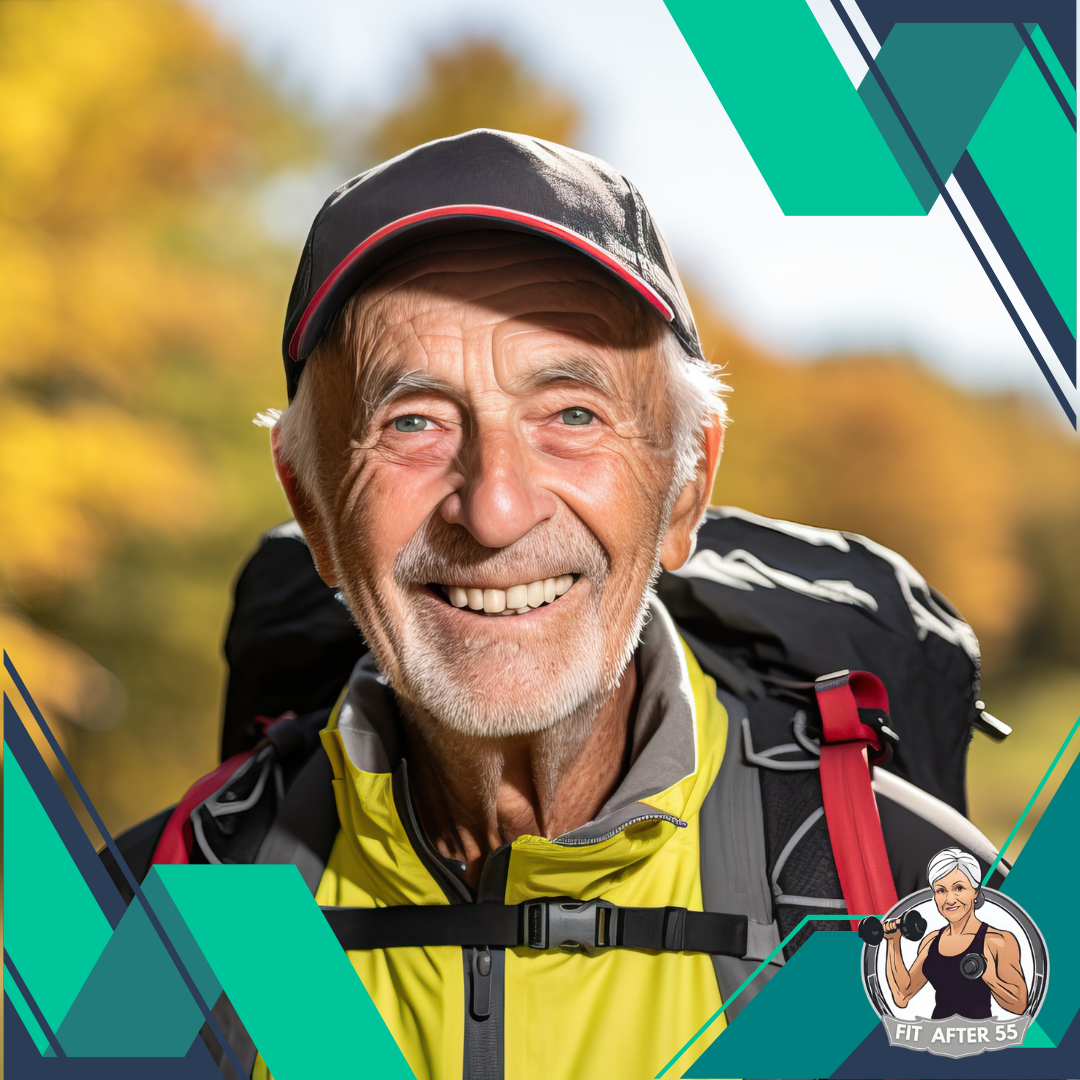
By integrating physical fitness, mental clarity, and community engagement, this simple yet profound activity invites everyone to step outside, explore, and discover the transformative power of moving in harmony with the world around you. So grab your poles, embrace the journey, and let Nordic walking lead you towards a brighter, more enriching tomorrow.
Frequently Asked Questions
In this section, you’ll find concise responses to some of the most common questions about Nordic Walking in nature, each designed to enhance your understanding and practice of this outdoor activity.
What are the health benefits associated with Nordic Walking in nature?
Nordic walking is a full-body exercise that works up to 90% of your muscles.
The walking poles help turn a simple walk into an effective cardiovascular workout that also improves your strength and endurance.
What essential gear is required for engaging in Nordic Walking?
The central piece of equipment for Nordic walking is a pair of specially designed walking poles.
Comfortable walking shoes, appropriate weather-dependent clothing, and possibly a water bottle are also essential for a successful Nordic walking session.
How does Nordic Walking in natural settings differ from urban walking?
Walking in natural settings typically offers variable terrain and elevation, which can enhance the workout’s intensity.
Additionally, the calm and scenic aspects of nature can also improve mental well-being.
What are the best practices for beginners to Nordic Walking in the outdoors?
Beginners should start at a comfortable pace and distance, gradually increasing intensity.
Learning the correct pole technique is also crucial for effectiveness and to avoid injury.
Can Nordic Walking be practiced in all types of natural terrains and what are the challenges?
Nordic Walking can be performed in various natural terrains from flat paths to hilly landscapes.
However, different terrains pose their own challenges such as maintaining balance and proper pole placement on uneven ground.
What safety precautions should be considered while Nordic Walking in remote natural areas?
When walking in remote areas, carry a map, compass, and GPS device.
It’s also important to inform someone about your route and expected return time.
Be aware of the local wildlife and weather conditions to ensure safety.
Embrace Vitality with Fit After 55
Welcome to Fit After 55, where age is just a number on your journey to vibrant health and well-being. Our platform is dedicated to empowering individuals aged 55 and above to lead active, fulfilling lives through tailored fitness programs and expert guidance. Whether you’re looking to boost your energy, improve mobility, or simply maintain a healthy lifestyle, we’re here to support you every step of the way.
At Fit After 55, we understand the unique needs of mature adults, which is why our programs are designed with your comfort and safety in mind. From gentle exercises to targeted strength training and nutritional advice, our resources are curated to help you achieve your health and fitness goals effectively and sustainably. Join our community today and discover the joy of living life to the fullest, no matter what your age may be.
Read More

